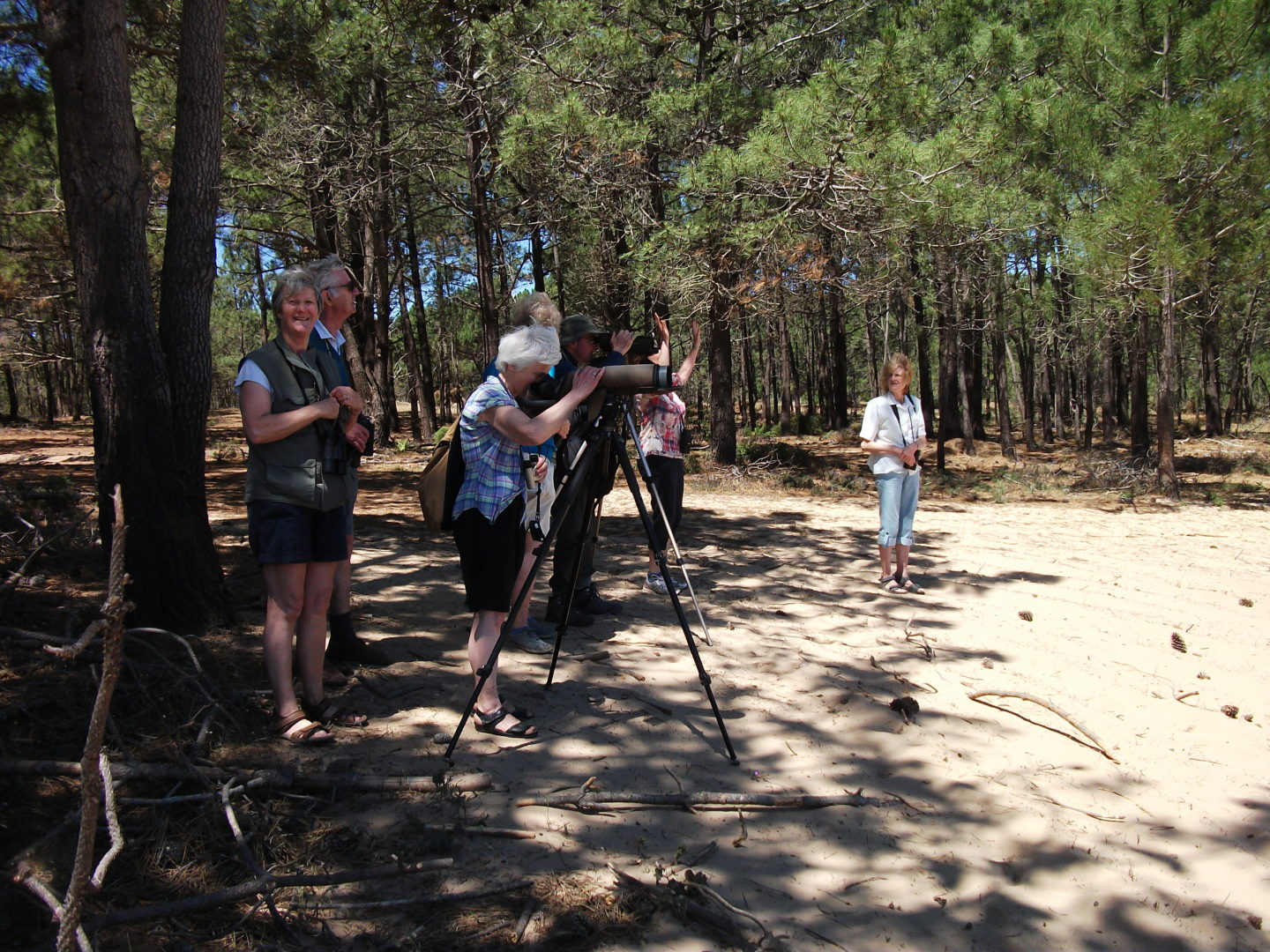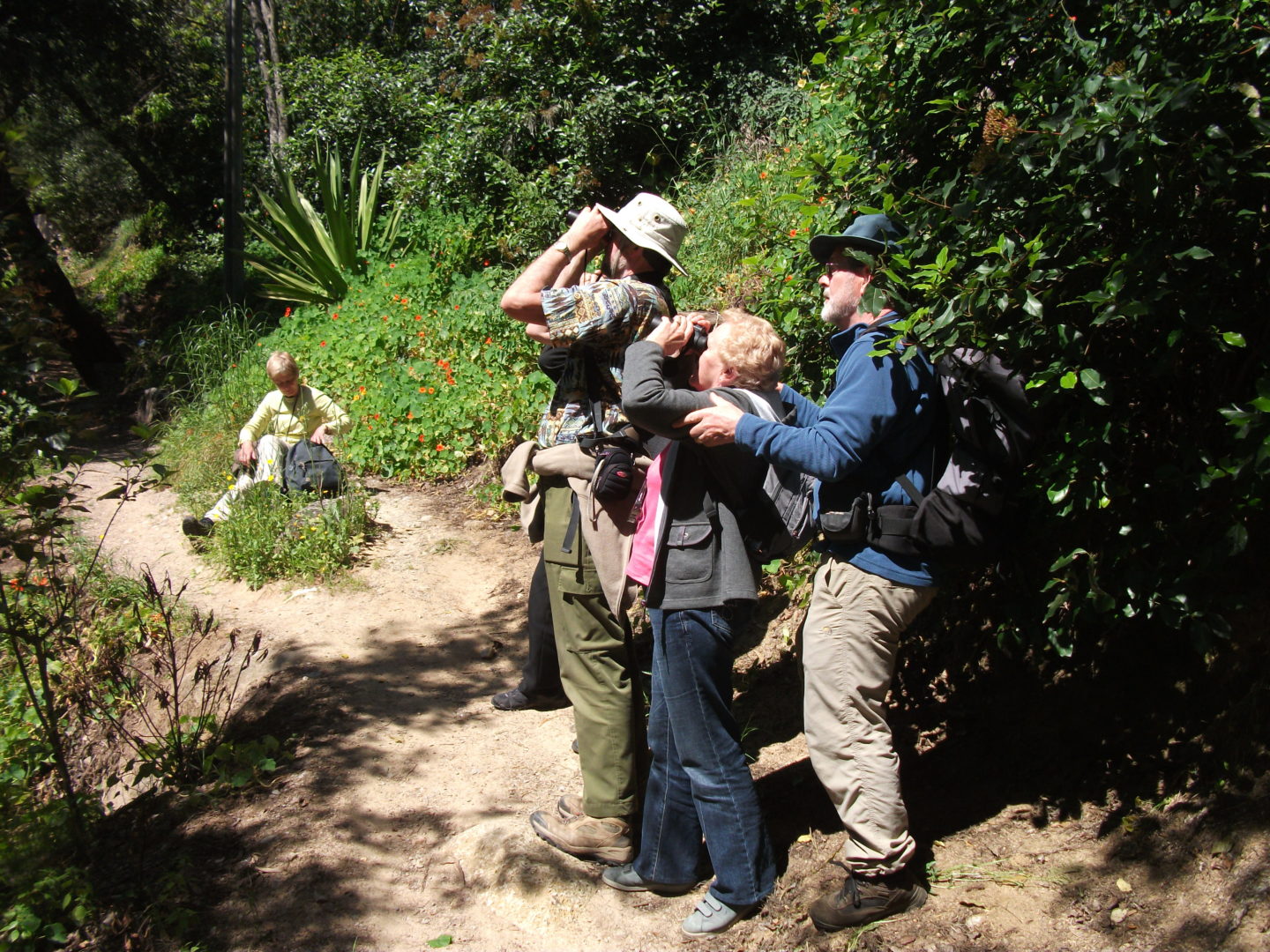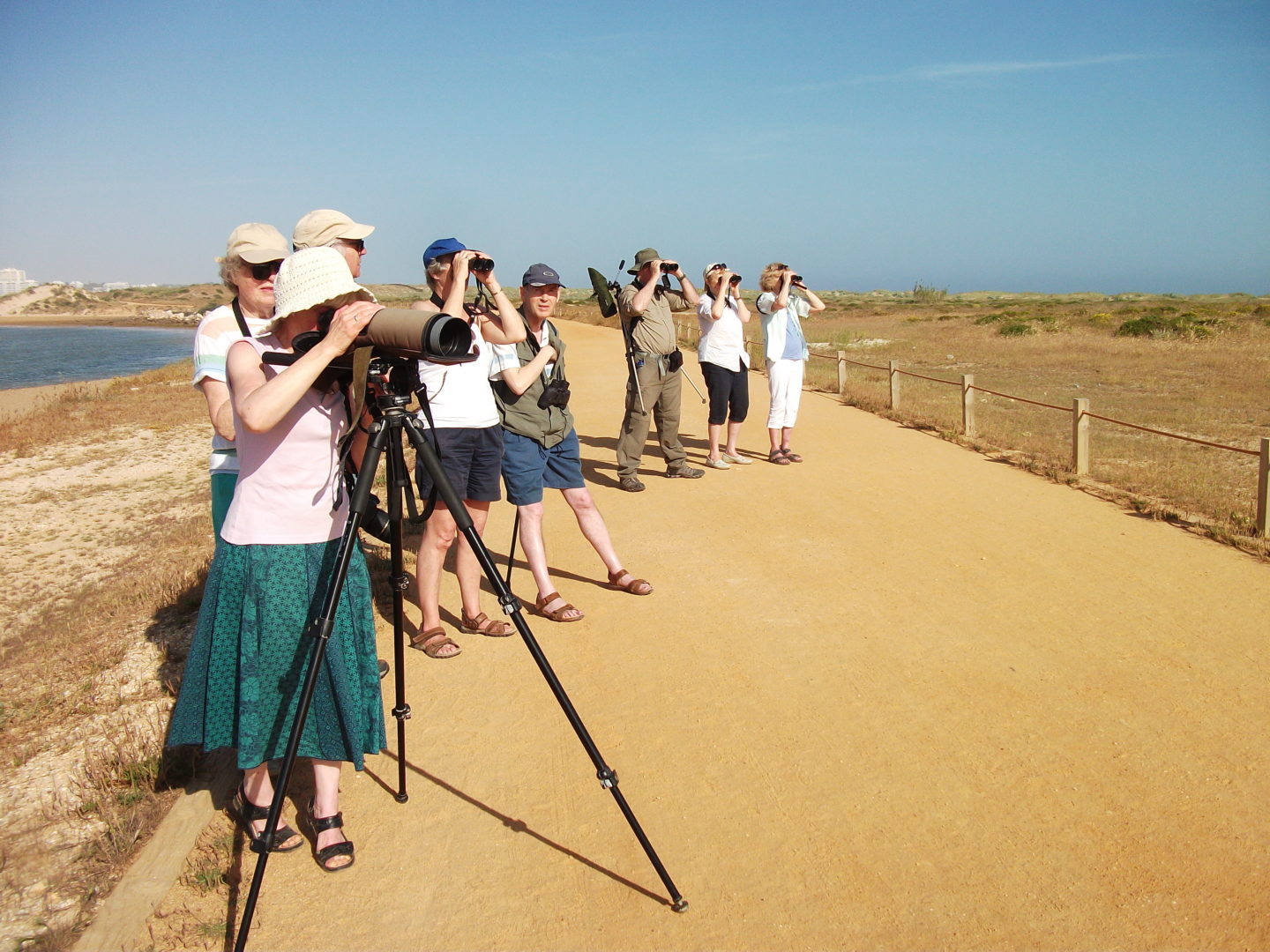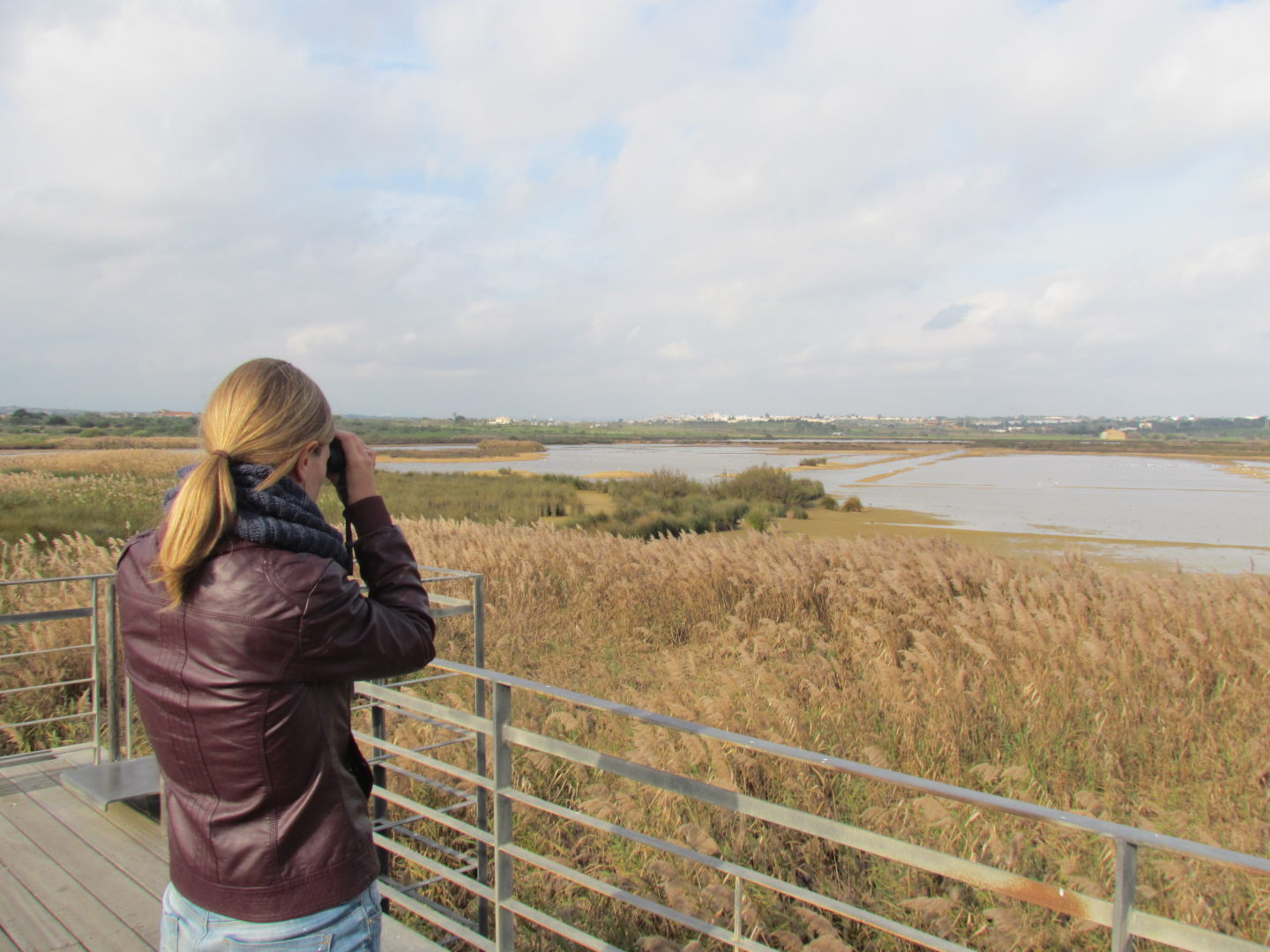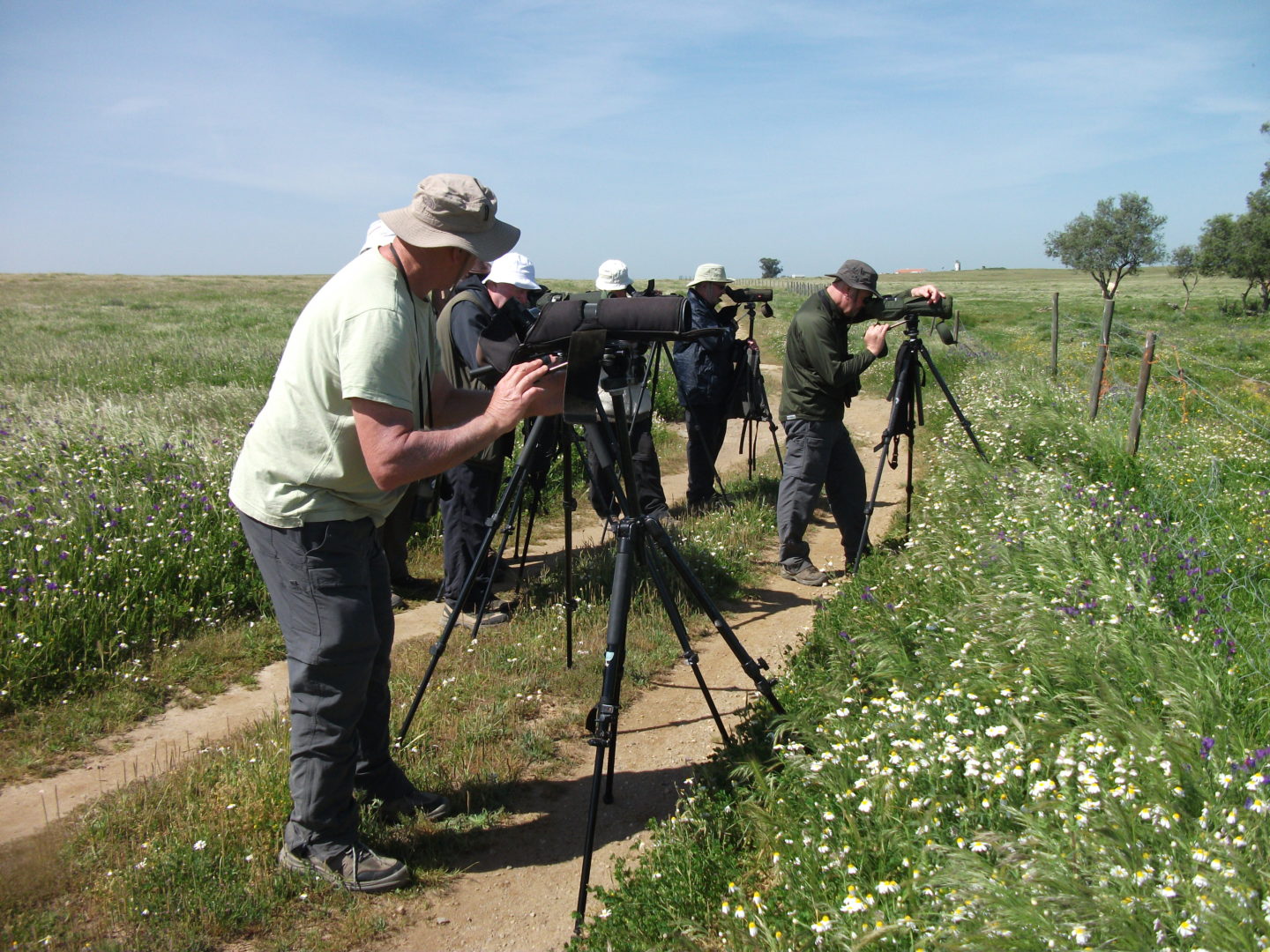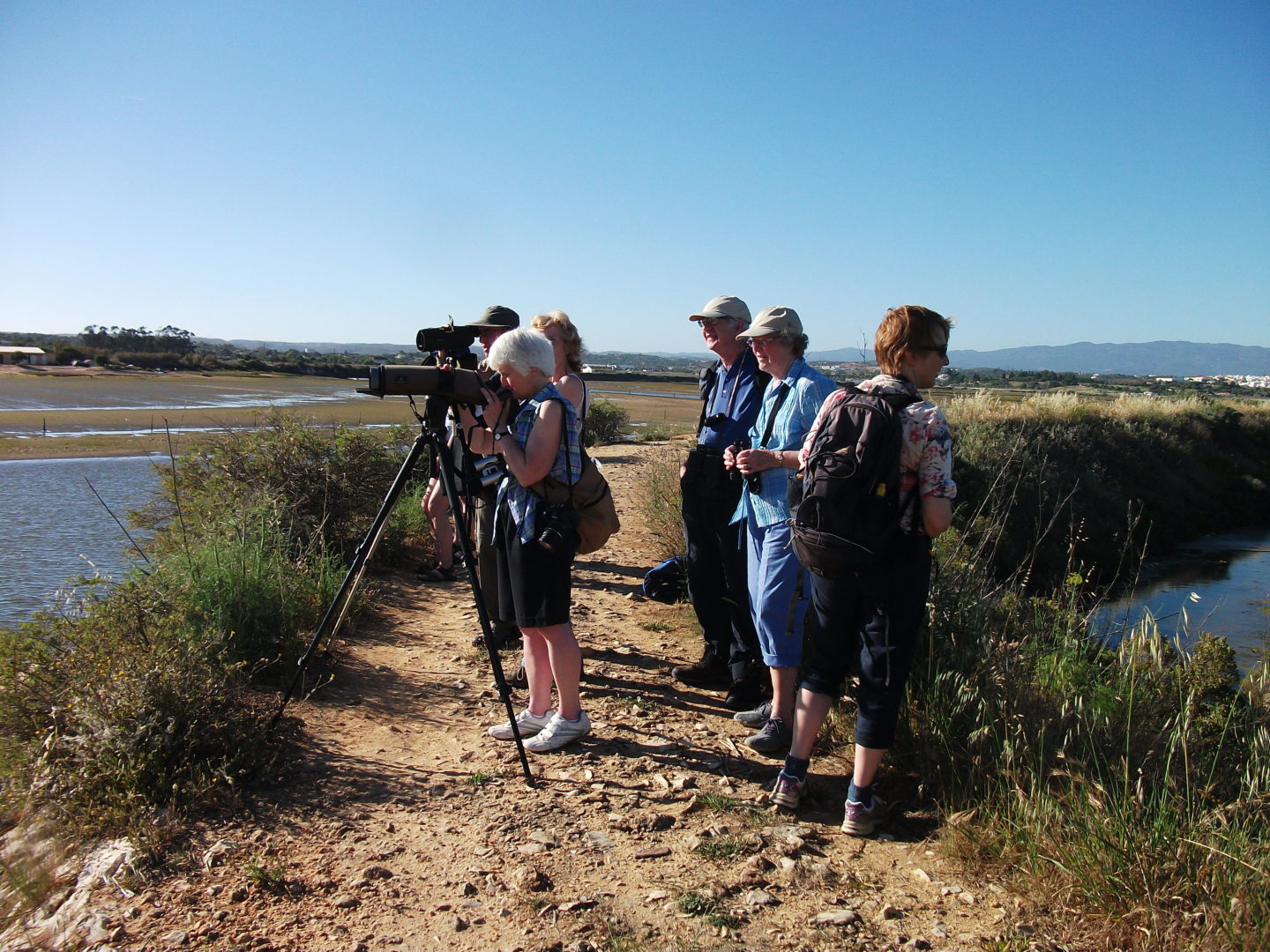
DAY TOURS
Booking for one only? Contact us!
Are you spending some time in Algarve and you would like to try some birdwatching?
If you are looking for a short birdwatching experience, or if you never did birdwatching before, we have the tour for you. Choose from a wide variety that can go from one morning or afternoon to one day long programme.
You can discover quite different spots in Algarve or Alentejo. This diversity reflects on the habitats and on the variety of birds you will be able to spot.
NOTE: these prices are calculated taking into consideration what we think to be the best length of time in order to allow the bird watchers to see as many species in that day as possible. However if you would prefer a shorter visit let us know and if your group is the only one participating in that day visit, the price can be reviewed downwards. Either request that on the booking form, in the observations box, or get in contact with us.
Also worth noticing that there are no extra costs (petrol or mileage)!
Day Tour Prices
| Locations | Day | Duration | Length walked (Km) | Difficulty |
Prices |
| Sagres | Monday | 8 hours | 5 Km | Easy | € 80.00 |
| Monchique | Tuesday | 8 hours | 5 Km | Medium | € 68.00 |
| Abicada | Wednesday morning | 4 hours | 4 Km | Easy | € 39.00 |
| Alvor Dunes | Wednesday afternoon | 4 hours | 3 Km | Easy | € 39.00 |
| Abicada + Alvor Dunes | Wednesday | 8 hours | 7 Km | Easy | € 60.00 |
| Lagoa dos Salgados | Thursday | 4 hours | 1 Km | Easy | € 49.00 |
| Castro Verde (snack included) | Friday | 14 hours | 3 Km | Easy | €140.00 |
| Pelagic Boat Trip | Saturday | 3 hours | € 45.00 | ||
| Ria de Alvor | Saturday | 3 hours | 5 Km | Easy | € 32.00 |
| Ria Formosa | Sunday | 8 hours | 4 Km | Easy | €100.00 |
| Ria Formosa East | Sunday afternoon | 4 hours | 2 Km | Easy | € 82.00 |
| Ria Formosa West | Sunday morning | 4 hours | 2 Km | Easy | € 77.00 |
| Orchid tour | Saturday (Spring only) | 3 hours | < 1 Km | Easy | € 34.00 |
Prices per person. All taxes included at current rate.
Vending platform fee not included.
Payments are in Euros only.
What is included?
The guide, a checklist, the use of field guides, a drink at the end or middle of the day and all the driving are included in the price.
Also, all taxes are already included in our prices, but not the vending platform fee. You just pay what is on the price table.
Don’t have your binoculars with you?
We can rent them to you, for the whole tour. Ask for more information.
Booking for one only? Contact us!
Day Tour Programmes
The meeting point is always at the A ROCHA centre. Departure time to be arranged, as it changes throughout the year, because of sunrise time. You will be driven to the location in one of our vehicles.




